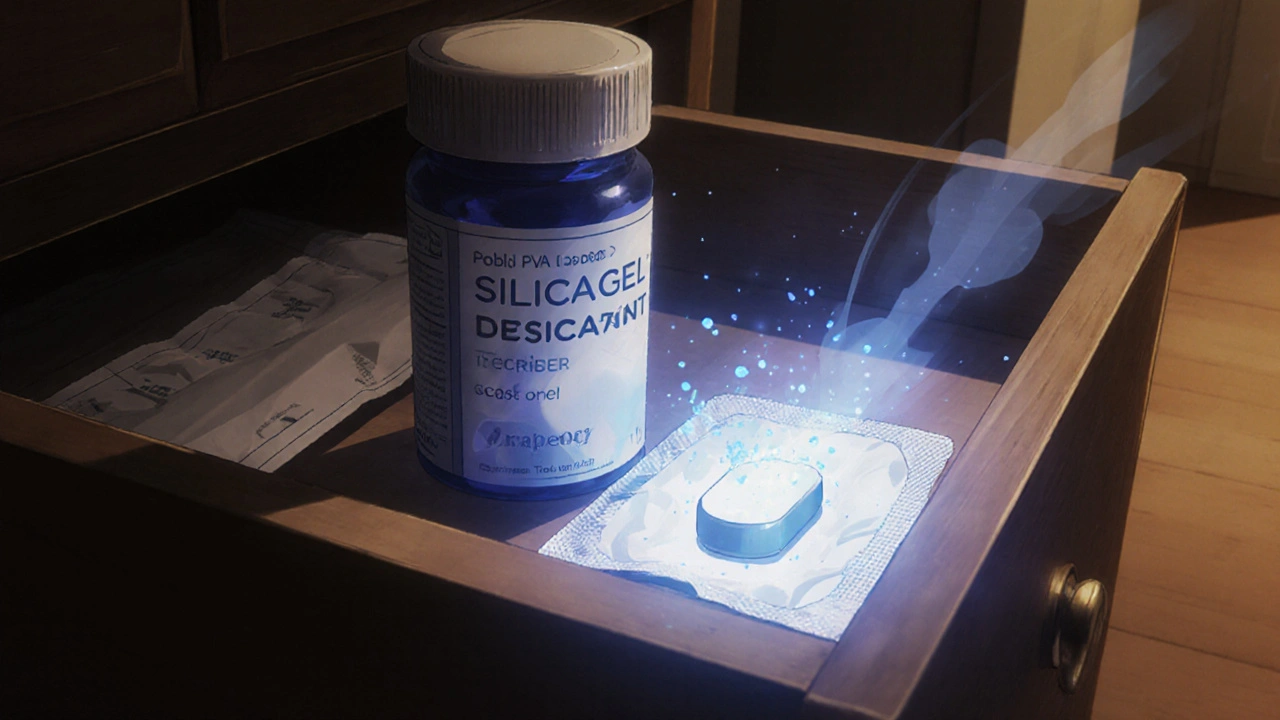Pharmaceutical Moisture Control: Why It Matters for Drug Safety and Effectiveness
When you think about what makes a medicine work, you probably imagine the active ingredient—what it does in your body, how fast it kicks in, or how long it lasts. But there’s a hidden player in every pill, capsule, or inhaler that doesn’t get enough attention: pharmaceutical moisture control, the science and practices used to prevent water from damaging medications during storage and transport. Also known as drug stability management, it’s what keeps your pills from crumbling, your powders from clumping, and your liquids from going bad before their expiration date. Without it, even the best-designed drugs can fail—sometimes silently, sometimes dangerously.
Moisture doesn’t just make pills look weird. It triggers chemical reactions that break down active ingredients. For example, hygroscopic drugs, medications that actively pull water from the air like certain antibiotics or antidepressants, can lose potency in just a few days if stored in a humid bathroom. Even the excipient sensitivity, how non-active ingredients like fillers and binders react to water matters. Lactose, a common filler, can degrade and form compounds that change how your body absorbs the drug. Some tablets become so soft they stick together in the bottle. Others crack open, exposing the contents to bacteria or oxidation. These aren’t rare edge cases—they’re everyday risks in pharmacies, homes, and shipping warehouses around the world.
That’s why packaging isn’t just about looks. Blister packs with aluminum backing, desiccant packets inside bottles, and moisture-barrier films aren’t optional extras—they’re critical defenses. You’ve seen those little packets labeled "Do Not Eat" in your medicine bottle? They’re not there for fun. They’re absorbing moisture so your drug doesn’t turn into a sticky mess. And it’s not just about the bottle. Temperature and humidity during shipping can wreck a batch before it even reaches the pharmacy. Manufacturers run climate-controlled labs to test how long a drug stays stable under different conditions. Regulatory agencies like the FDA and EMA require this data before approving any product. If moisture control fails, the drug fails—and patients pay the price.
What you’ll find in the posts below isn’t a textbook on chemistry. It’s real-world insight from people who’ve seen what happens when moisture sneaks in. You’ll read about how certain heart meds become less effective in humid climates, why some generic pills degrade faster than brand names, and how storage mistakes in emergency go-bags can turn lifesaving drugs into useless powder. There’s also practical advice on how to protect your own meds at home—because knowing what to avoid is just as important as knowing what to take.
How to Prevent Moisture Damage to Pills and Capsules: A Practical Guide for Safe Storage
Moisture can destroy pills and capsules, making them ineffective or dangerous. Learn how to protect your medication with simple storage tips, the role of desiccants, and what packaging actually works.

